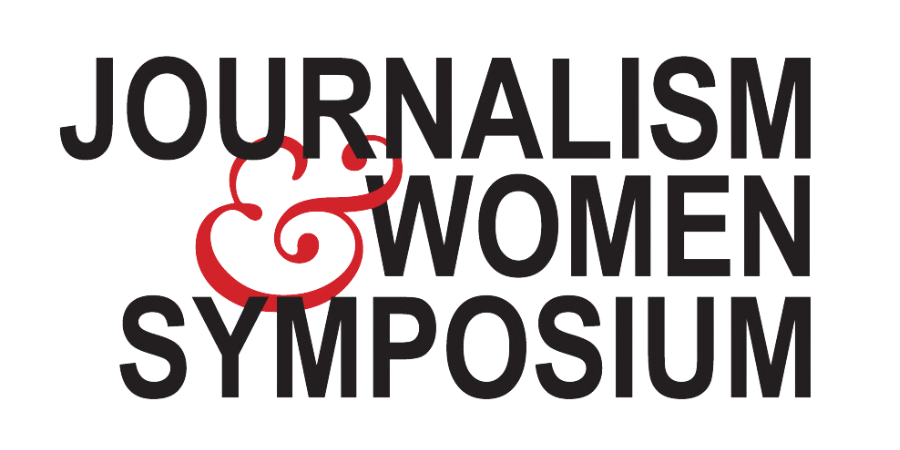Peggy Simpson on breaking barriers for women in the media, interviewed by Edith Lederer
Peggy Simpson
Peggy began the interview talking about when she decided to be a journalist, saying "As a teenager in the 1950s, I listened every night to Pauline Frederick reporting from the United Nations - there might have been barriers for women, but as a kid, I didn't see it, because there was Pauline Frederick."
As a sophomore in college, Peggy began writing for the college newspaper, and was picketed by people who didn't like what she wrote -- which she thought was great. She says, "After college, I didn't think that there were barriers, I just couldn't get a job."
After contributing stories to the Hondo-Anvil Herald in Hondo, Texas, she was hired as the editor. She also reported for the paper, covering local stories - local businesses didn't like what she wrote. After about a year, she began looking for a job at the Associated Press (AP), got a temporary 9-month job, then a 6-month job, then a permanent job at AP in Dallas in 62. She was the youngest staff member by about 25 years. She worked the night shift, swing shift....every shift.
One day in 1963, Peggy's editor asked her to get a date with a state legislator because the Governor was giving a dinner for President Kennedy that was closed to the press. After watching Kennedy's motorcade pass, she went back to the AP office, where she heard the news that President Kennedy had been shot, and was in Parkland hospital. She turned back around and headed back to the Book Depository in Dallas, where the shooting happened. She stood next to a cop and reported what the cop said, first, that there was a shooting of a cop in a movie house (which turned out to be true), and that Lyndon Johnson had a heart attack (which turned out to be false), which went out on the wire. She was assigned on Sunday morning to go cover the transfer of Oswald, and saw the shooting of Oswald by Jack Ruby. She called her editor to report what she saw and heard around her, saying, "The cops think they know this guy - they think he's Jack Ruby. The editor responded, 'Holy shit! I know Jack Ruby! I drink at his bar.' All the local cops knew Jack Ruby, so he had easy access."
At age 24, she had a conversation with her Bureau Chief about her career - he told her that she could never do his job, because in order to sell the AP service to local news agencies, "You have to be able to drink the guys under the table. And besides, their wives won't like it." But she did get to be a Washington correspondent covering the southwestern regional beat in Congress, where she covered a talk by Fannie Lou Hamer in Washington (1972), which was the beginning of a women's political beat, and a lot of civil rights legislation.
Around this time (mid-70s), Shirley Christian led a class-action lawsuit charging the AP with gender and race discrimination, after trying to be a foreign correspondent, learning five languages, and still being denied a job as a foreign correspondent.
The Equal Employment Opportunities Commission (with the help of the AP) kept losing the paperwork, and it took 4 or 5 years before the case moved ahead when the EEOC ruled that they had found 'probable cause' of sex and race discrimination, which enabled the plaintiffs to take the case to federal court. At that time, Peggy joined the lawsuit - her bureau chief called her a 'stupid bitch', another AP editor said that if she ever returned to the AP, she would cover weather only - forever.
All of the six or seven major lawsuits about gender and race discrimination [against the AP, New York Times, Reader's Digest and other news agencies] were settled outside of court, with the admission by the news agencies that "We didn't do it, and we won't do it again."
In 1975, Peggy went to cover the UN Conference on Women in Mexico, where the local AP reporters were asking each delegation, "Are you a bra-burning feminist, and what do you think about bra-burning feminists?" Her own opening story about the conference was supplanted with a description of what the Russian cosmonaut attending the conference was wearing.
She left the AP in 1979 after a Nieman Fellowship at Harvard, and worked for the Boston Herald and other agencies covering national politics and economics for another decade, and opening a political bureau for Ms. magazine.
In 1990, Peggy went to Indiana University to teach, and worked in Poland that summer. She went back to the University as a journalist in residence, and in 1992 went back to Poland and covered the business and society transition for the next ten years.
She recently worked on a calendar project: "Meet the coolest old people on the planet", trying to bash stereotypes.
On her latest project, promoting the Aging in Place movement, "The Village movement started with people in Beacon Hill in Boston saying 'We want to have more options than our parents had.' Instead of having to live with your kids, or enter assisted living, you have the option to stay at home -- and you're not just staying at home depressed, but you're actually getting out and having a pretty damn fabulous life."
Post by Jenka Soderberg, 2011 Joan Cook Fellowship recipient

